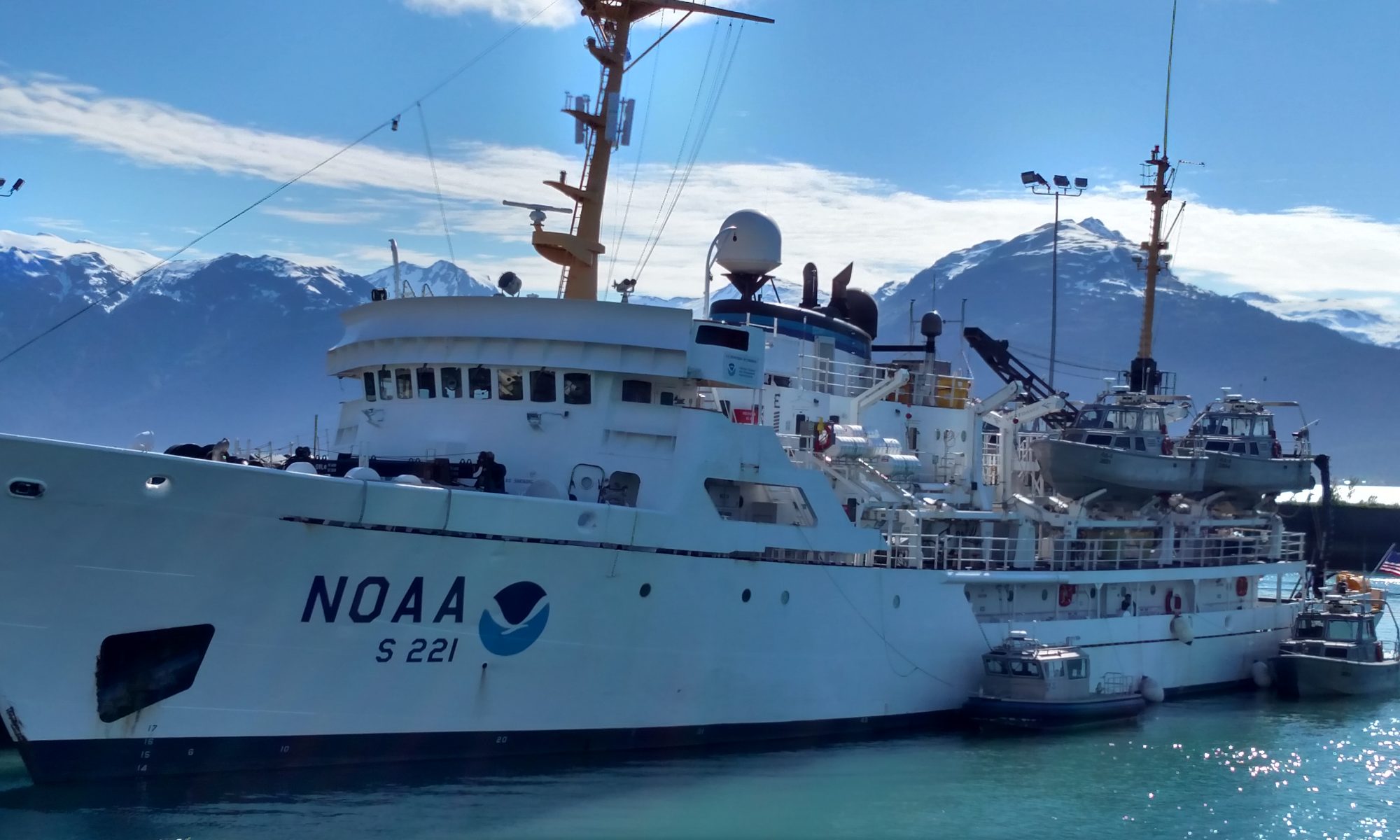
NOAA Teacher at Sea
Rita Salisbury
Aboard NOAA Ship Oscar Elton Sette
April 14–29, 2013
Mission: Hawaii Bottomfish Survey
Geographical Area of Cruise: Hawaiian Islands
Date: Tuesday, April 23, 2013
Science and Technology Log

A few days ago we dropped the CDT, an apparatus that collects data on the conductivity, the depth, and the temperature of the sea water in which the acoustic survey is taking place. All of these three things impact how quickly sound travels underwater. The scientists collect the information and then use it to figure out an accurate rate of speed for the sound waves. Once they have that information, they can determine how far a target is from the ship.I was able to ride along in a small boat to Maui to pick up parts for the AUV. While in the Maui harbor, I had the opportunity to visit the Huki Pono, a small boat working on this survey that is using BotCams to survey the fish population. The palu, or bait, that I help make every day is frozen and then transferred to the fishing boats. It is frozen in a shape that fits into a cage on the BotCam located near the camera. As the bait breaks up, fish are attracted to it and come close enough to the BotCam to be visually recorded. There is a lot of video to go through so Dr. Kobayashi says they won’t have the data from the BotCams for a while. But the other three fishing boats assigned to this project turn their survey information in every evening and I get to add it to a spreadsheet to help keep track of what section the boats were in and what they found while they were there.


Work continues with the ROV and AUV. The scientists are always working on them, trying to make them run as smoothly as possible. We worked on calibrating the acoustics again this morning for the same reason. The better the information you have when you start a project, the better chance you have of having a successful outcome.
As I mentioned before though, not everything we are doing is high tech. We fish off the side of the ship in the evenings, dropping our lines all the way to the bottom so they are on the sea floor. The scientists running the acoustics tell us if they see fish and then we do our best to catch a representative sample. Here are two of the fish I caught off the bottom: an opakapaka and a taape. The observers that ride in the small boats every day spend the night on the Sette. That way, they can turn their logs in and I can record the data. As a bonus, a few of them are expert fishermen and are a huge help to us as we fish from the ship.

Personal Log
I’m really enjoying my time on the Sette. In addition to learning new things that I can apply in my classroom, I’m making new friends. Everyone is exceptionally friendly and they go out of their way to explain things to me. Most of them call me “Teach” or “Taz” and almost all of them have sailed with a Teacher at Sea before.
Did You Know?
You can tell the age of a fish by their otoliths? The picture has the otoliths from an opakapaka, an ehu, and a hogo. Otoliths are a fish’s “ear bones” and they have growth lines in them much like a tree has growth rings.

Additional Section
Why are these bottom-dwelling fish red?


